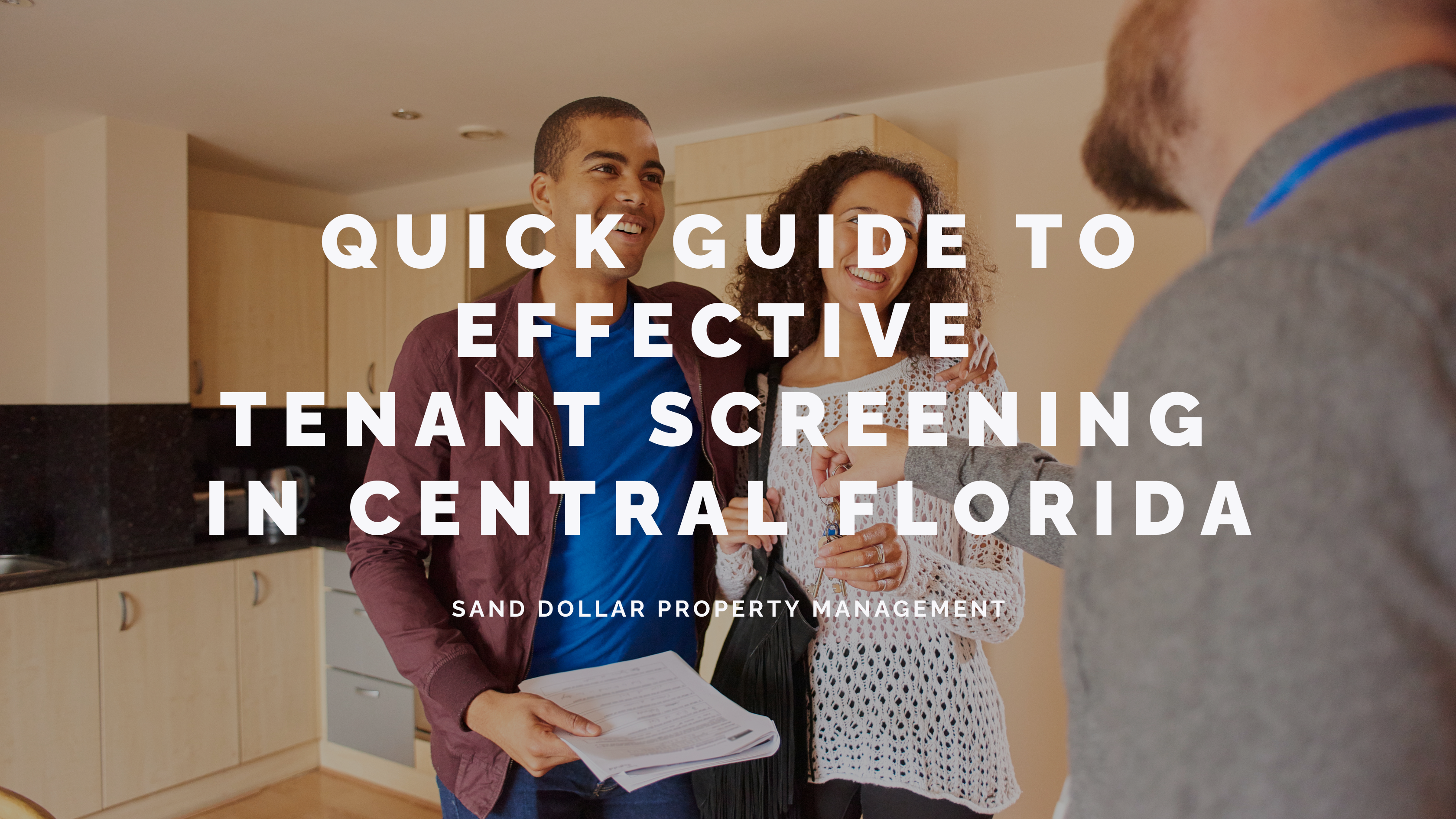Investing in Central Florida real estate can be highly profitable, particularly in cities like Orlando, Tampa, Lakeland, Davenport, and Winter Haven, which are popular with both renters and tourists. Whether you're managing short-term or long-term rentals, finding the right tenants is key to protecting your investment.
However, owning rental property comes with risks—especially when it comes to tenants. Dealing with late rent, property damage, or evictions can be a nightmare for landlords.
Fortunately, a well-thought-out tenant screening process can help you avoid these issues, making your rental experience more positive and profitable. In this guide, we’ll walk you through six simple steps for screening tenants effectively.
A Step-by-Step Guide to Screening Tenants
The tenant screening process doesn’t have to be overly complicated! Here’s everything you must do to screen potential tenants effectively:
1. Familiarize Yourself with Local Rental Laws
Florida is generally considered a landlord-friendly state. The local landlord-tenant laws often favor landlords, making it easier for them to manage their properties and deal with tenants. However, this doesn’t mean that landlords have no responsibilities.

As a landlord, you must comply with the Florida Fair Housing Act throughout the rental process, this includes the tenant screening process. This means that you cannot turn away tenant based on their race, skin color, religion, sex, familial status, or national origin.
Instead, it would be best if you gave all prospective renters equal chances at renting your property. Failing to do so can result in fees, lawsuits, and serious damage to your business’ reputation.
2. Establish Clear Screening Criteria
Before you begin screening, it’s important to set strict criteria for what you expect in a tenant. Consider what’s most important to you—such as steady income, a good rental history, or creditworthiness. Other factors like pet ownership or smoking policies should also be considered if they apply.
Once you define your criteria, stick to them consistently. This will not only streamline the process but also help you avoid any unintentional bias or inconsistency.
3. Pre-Screen Tenants
To save time and effort, pre-screen potential tenants before going through the full application process. You can streamline this step by including key requirements in your property listing. For example, state income thresholds, pet policies, and credit score expectations attract only qualified candidates.

In addition, consider requesting a pre-application or brief questionnaire for interested renters to fill out before showing the property. Ask for details such as employment status, income, and rental history. This step will give you a quick overview of whether the tenant meets your basic requirements before investing more time in the screening process.
During property showings, take the opportunity to ask more questions. It’s also a chance to observe how they interact with the space and their level of interest and responsibility.
4. Review and Analyze Applications
Once you've gathered applications, it’s time to review them carefully. Look for key information such as:
Employment status and income
Rental history
References from previous landlords
Be sure to get permission to run credit checks, as this will provide crucial insights into a tenant's financial responsibility and past behavior. Applicants with consistent income, good credit, and positive references are generally more likely to be reliable renters who will maintain your property.
5. Screen Pets
If you’re open to tenants with pets, screening them is just as important as screening the tenants themselves. Untrained or aggressive pets can cause property damage, disturb neighbors, and increase your maintenance costs.

When screening pets, ask for specific details such as the animal’s breed, size, and age. Also, request proof of vaccinations and any obedience training they’ve completed. Many landlords also require an additional pet deposit and clear pet-related rules in the lease to protect their property.
6. Choose the Best Fit
After reviewing applications, and screening tenants and their pets, you’ll likely have a shortlist of qualified candidates. From this group, select the tenant who best aligns with your criteria and who seems the most reliable.
When choosing between multiple applicants, consider factors like financial stability, references, and communication throughout the process. Your goal is to find someone who will not only pay rent on time but also take good care of the property and respect the lease terms.
Once you've made your decision, contact the chosen applicant promptly to explain the next steps, such as conducting move-in inspections, signing the lease, and submitting the security deposit. Be clear about the timeline for move-in and any additional documentation required. It’s also good practice to notify other applicants politely, keeping your message brief and professional.
Bottom Line
Proper tenant screening is crucial to safeguarding your Central Florida rental property. By following these six steps—knowing the local laws, setting clear criteria, pre-screening tenants, reviewing applications thoroughly, screening pets, and selecting the best fit—you can avoid many common headaches that come with property management.
If you need help finding the right tenants, contact Sand Dollar Property Management today. Our team of experts will assist you in securing reliable renters for your Central Florida property, giving you peace of mind and helping to protect your investment.












